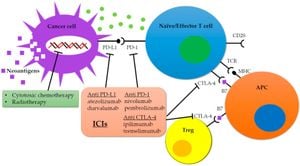Wendan peel polysaccharide (PP), derived from the peel of the Wendan fruit, has gained attention for its antioxidant properties. Recent research has significantly advanced the field, demonstrating how chemical modifications can potentially amplify these effects.
The study conducted by Bobo Lin and Gangliang Huang introduced various chemical modification techniques to Wendan peel polysaccharide. The results highlighted the antioxidant capabilities of these modified polysaccharides, particularly emphasizing the efficacy of phosphorylated Wendan peel polysaccharide (P-PP).
The modifications included acetylation, phosphorylation, and carboxymethylation. Each approach resulted in different degrees of substitution and altered the polysaccharide's structure. Acetylated Wendan peel polysaccharide (Ac-PP) displayed a substitution degree of 0.42, P-PP had 0.21, and carboxymethylated polysaccharide (CM-PP) reached 0.77. This variation indicates the different levels of success across the chemical modification methods applied.
The antioxidant activity was analyzed by measuring the ability of the polysaccharides to scavenge free radicals, such as DPPH radicals, superoxide anions, and hydroxyl radicals. The results revealed notable differences among modified products. For example, at a concentration of 3.2 mg/mL, P-PP demonstrated superior scavenging activity against DPPH radicals at 72.50% and 69.38% for superoxide radicals. This indicates how certain modifications can distinctly influence the antioxidant efficiency of polysaccharides.
Polyphenolic compounds and other polysaccharides are well-known for their ability to mitigate oxidative stress caused by reactive oxygen species (ROS). These species are linked to various health issues, underscoring the importance of antioxidants. By employing various techniques, researchers aimed to not only improve the structure and activity of polysaccharides but also investigate potential therapeutic applications.
Methods such as nuclear magnetic resonance (NMR) and infrared spectroscopy confirmed the successful modification of PP. The presence of characteristic absorption peaks and functional groups post-modification underscored the chemical structural changes occurring within the polysaccharides. For example, Ac-PP presented new absorption peaks associated with the acetyl groups, indicating successful acetylation.
Interestingly, not every modification led to enhanced antioxidant activity. The study found, "The experimental results indicated not all chemical modifications could significantly augment the antioxidant activity of the polysaccharides." This raises fascinating questions about the relationship between polyphenolic structure modifications and antioxidant efficacy.
Aside from antioxidant characterization, the study also adds value to the growing body of literature concerning dietary polysaccharides and their health benefits. With increasing consumer interest in natural antioxidants, the research nuances the discussions around the extraction, modification, and application of polysaccharides derived from food sources.
Given the promising results, particularly of P-PP, there is potential for future research to explore therapeutic applications for these modified polysaccharides. This could include exploring their use as dietary supplements, functional foods, or ingredients within the cosmetics and pharmaceutical industries due to their ability to scavenge harmful free radicals.
Presenting these findings not only enriches current scientific knowledge but also advocates for the continued study of the structure-activity relationships of polysaccharides, fostering innovations aimed at addressing oxidative stress through dietary means.



